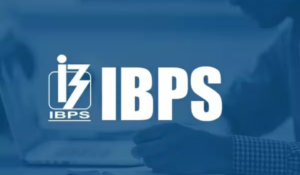Quantitative Aptitude is one of the most scoring yet challenging sections of the IBPS Clerk Mains Exam. Over the past three years, the pattern has seen notable changes especially in the weightage of DI, arithmetic complexity, and logical caselets. Understanding the year-wise Quant trend helps candidates predict question patterns and prepare with greater accuracy. Here’s a detailed analysis of how the Quant section evolved over the last three exam cycles.
IBPS Clerk Mains Quant Trend of 3 Years
The IBPS Clerk Mains Quant Trend of the Last 3 Years shows a consistent rise in the number of high-level Data Interpretation sets along with an increased focus on Arithmetic-based word problems. While DI remains the dominant scoring area, topics like Percentage, Profit & Loss, Time & Work, and Ratio-Mixture continue to appear regularly, highlighting the exam’s shift toward concept clarity and speed-based problem-solving.
IBPS Clerk Mains 2024
- Section difficulty: Moderate to Difficult
- DI dominated the section with 3–4 sets
- Caselets and combination graphs were prominent
- Arithmetic questions tested conceptual clarity (Ratio, Profit–Loss, Mixture, Ages, Time & Work)
- Missing number series and quadratic equations were limited
Topic-Wise Weightage (2024)
| Topic | No. of Questions |
|---|---|
| Data Interpretation | 15–18 |
| Arithmetic | 10–12 |
| Number Series | 3–4 |
| Quadratic | 1–2 |
| Miscellaneous | 2–3 |
IBPS Clerk Mains 2023
- Overall level: Moderate
- DI included bar graph, pie chart, and caselet sets
- Arithmetic had a balanced presence in the paper
- Few simplification or approximation questions
- Calculation-based questions were slightly time-consuming
Topic-Wise Weightage (2023)
| Topic | No. of Questions |
|---|---|
| Data Interpretation | 12–15 |
| Arithmetic | 8–10 |
| Number Series | 3–4 |
| Quadratic | 3–4 |
| Miscellaneous | 3–4 |
IBPS Clerk Mains 2022
- Difficulty: Moderate
- DI weightage was slightly lower compared to 2023 and 2024
- Arithmetic questions required more accuracy
- Missing number series appeared in most shifts
- No major surprises in question style and pattern
Topic-Wise Weightage (2022)
| Topic | No. of Questions |
|---|---|
| Data Interpretation | 10–12 |
| Arithmetic | 12–14 |
| Number Series | 4–5 |
| Quadratic | 3–4 |
| Miscellaneous | 2–3 |
3-Year Comparison of Quant Trends
| Year | DI Weightage | Arithmetic Weightage | Overall Difficulty | Notable Shift |
|---|---|---|---|---|
| 2024 | Highest (15–18) | Moderate | Moderate–Difficult | More caselets & combo charts |
| 2023 | Moderate (12–15) | Balanced | Moderate | More variety in DI sets |
| 2022 | Lower (10–12) | Highest | Moderate | Arithmetic-heavy section |
Key Observations from 3-Year Trend
- DI has increased significantly, especially in 2024.
- Arithmetic remains consistent, but the difficulty fluctuates.
- Caselets and multi-graph DI sets are becoming more common.
- Pure calculation questions are reducing; logical DI is increasing.
- Number series and quadratic questions appear fewer each year.
Preparation Strategy Based on Trend
- Focus more on DI practice especially combo graphs and caselets.
- Strengthen core arithmetic concepts to handle higher-level questions.
- Improve speed with calculations through regular practice of Vedic techniques.
- Solve previous years’ papers to understand evolving patterns.
- Take sectional mocks to build accuracy and stamina.




 Bank Mergers in India (1993–2025): Full ...
Bank Mergers in India (1993–2025): Full ...
 Simplification & Approximation – Mus...
Simplification & Approximation – Mus...
 Most Important DI Questions for IBPS RRB...
Most Important DI Questions for IBPS RRB...







